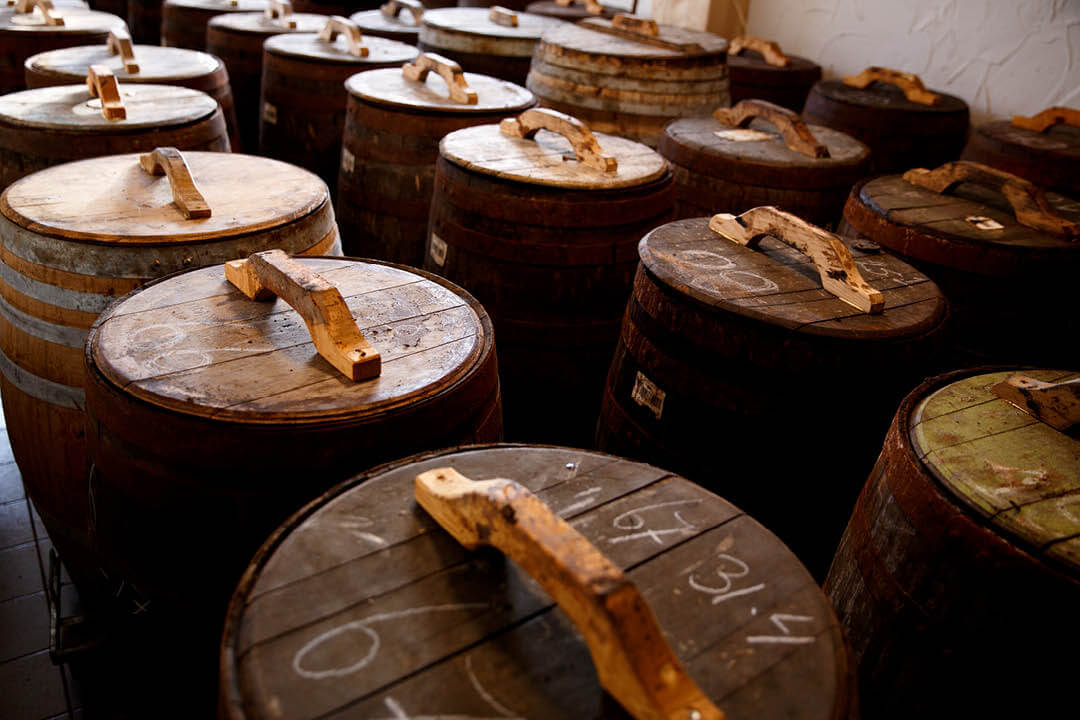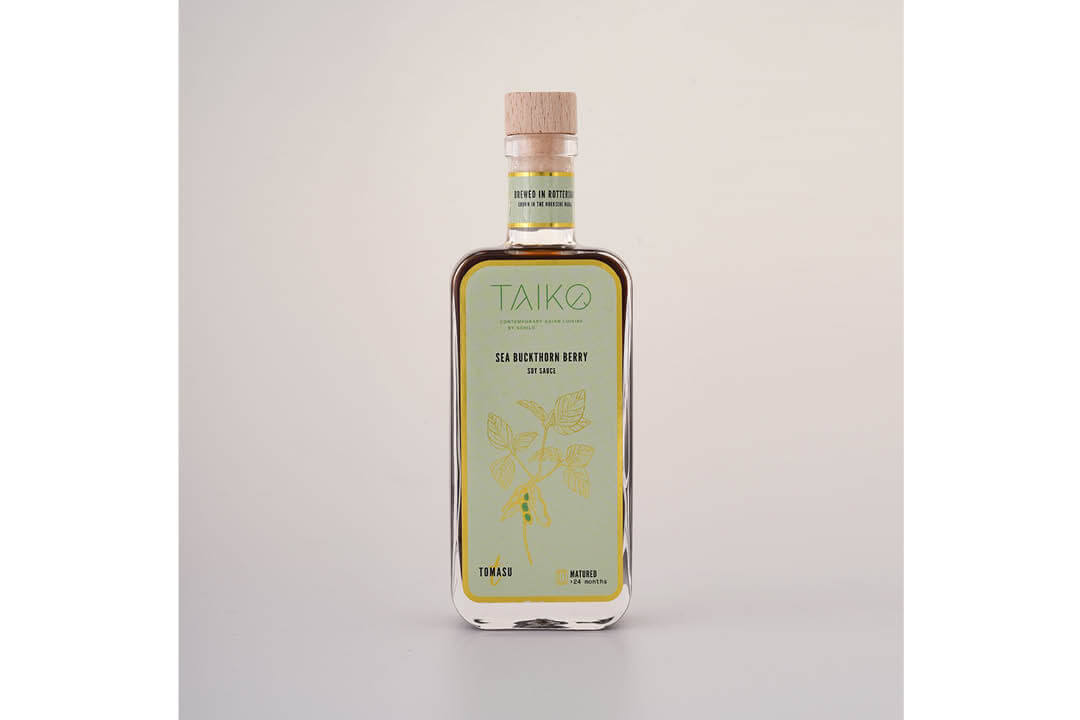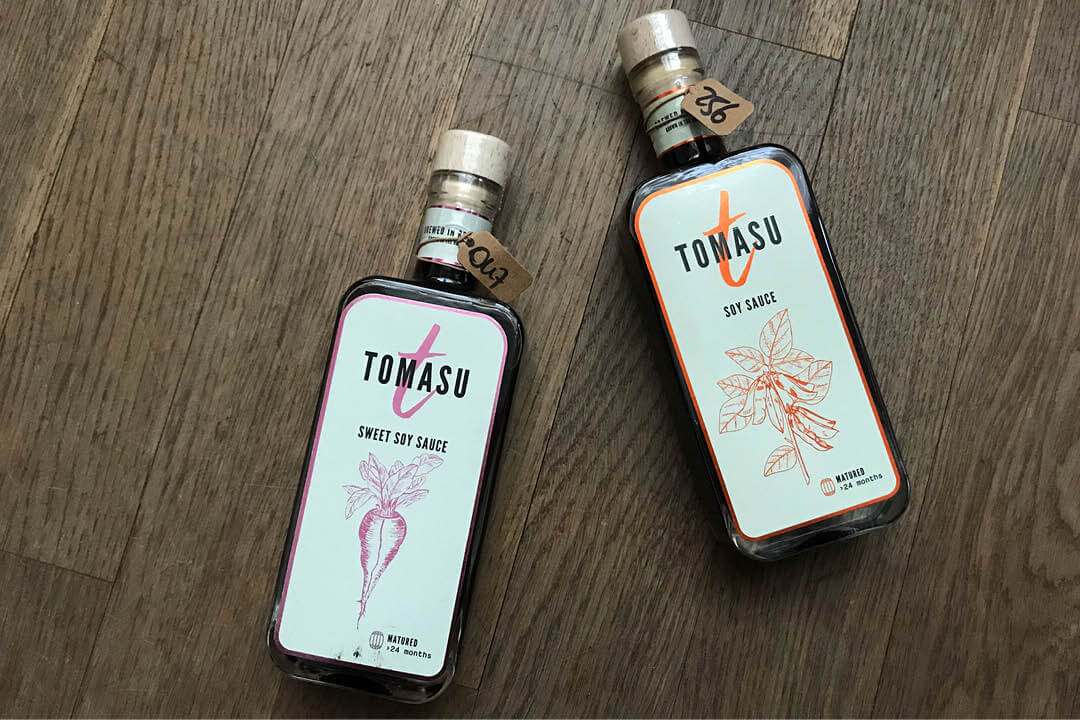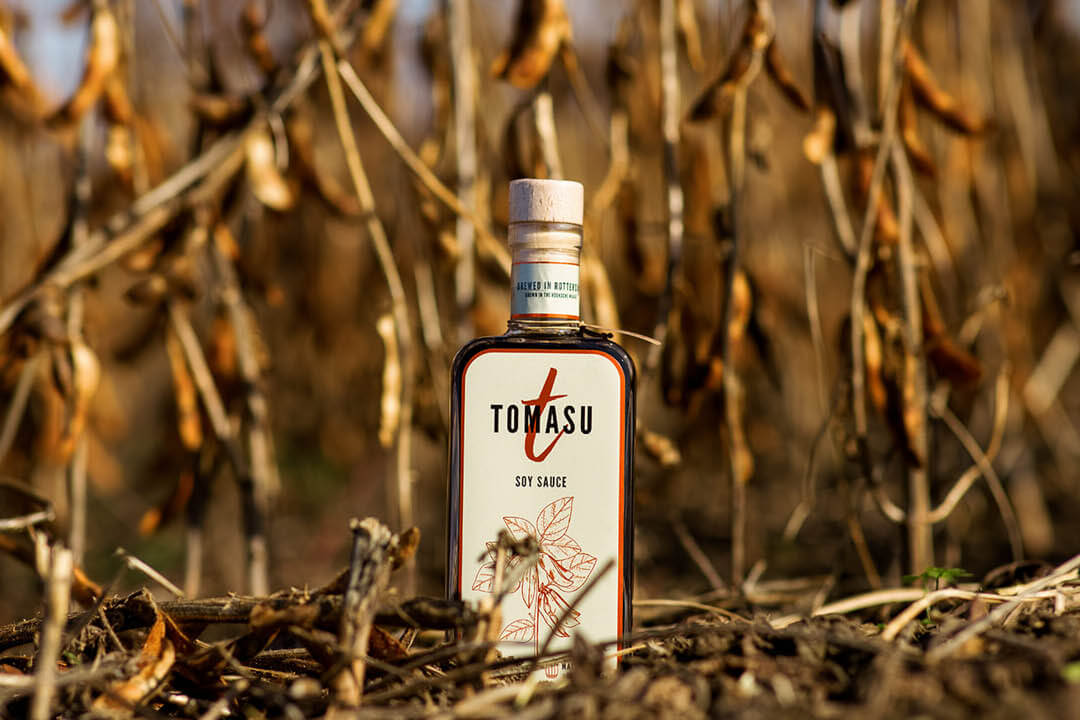Not from Japan or China, but from Rotterdam
Soy sauces have a long tradition in China and Japan and there are subtle differences. Hardly anyone is familiar with them, so people are quick to reach for the familiar, industrially produced soy sauce. There are more flavorful alternatives.
If only, then already
We make no compromises when it comes to olive oil, wine or salt. Why, we began to ask ourselves, do we enjoy high quality sushi and sashimi, but readily reach for the next best soy sauce on the table – in the familiar plastic bottle or placed decoratively in a tasteful ceramic container, depending on the location.
Through a recommendation, we became aware of a small company that grows soy and grain near Rotterdam and produces soy sauce from it.
The controlled process, from the cultivation of the ingredients to the careful fermentation and storage in former Scottish whisky barrels, made us curious – the taste of the soy sauces convinced us.

Pleasure with history
A seasoning mixture made from soybeans, grain and a salt solution, which is used to preserve food for longer through fermentation, was first described in Chinese sources from the 5th century.
Soy sauce was then modified and refined in Japan. The Japanese term shôju can be translated as sauce oil and has become the established term for soy sauce.
As with sake, there are a large number of small and medium-sized soy sauce producers in Japan. The world market leader Kikkoman is well known, with a market share of just under 40 percent in Germany, for example. And the trend is rising.
This is because soy sauce is suitable for seasoning many dishes. Even if you only want to use soy sauce for your next sushi take-away, it is worth paying more attention to soy sauce.
We are sure that from now on you will do without the small take-away portions of soy sauce in the plastic bottle and pour a more interesting soy sauce from the glass bottle into your bowl.
Less plastic is better for the oceans and certainly enhances umami, the so-called fifth flavor component. Good soy sauces are not only salty but also have a finely balanced aroma.
From the Japanese supermarket to Rotterdam
The classification in Japan provides for five standard sauces: Dark soy sauce, which is made from equal parts wheat and soybeans, and is by far the most popular soy sauce. It is followed by the lighter, lighter soy sauce.
There are also soy sauces with little to no wheat content, soy sauces with little to no soy content and a very dark, highly aromatic soy sauce that undergoes double fermentation.
A cuisine that values the smallest nuances of flavor, such as Japanese Kasekei cuisine, which celebrates the perfect pear or the perfect mackerel, requires different soy sauces depending on the dish.
The aim is not to season, but to use the soy sauce to bring out the flavor of the food even better.
Our search for an alternative to industrially produced standard soy sauce initially took us to a large Japanese supermarket in Düsseldorf, but we had to leave due to our lack of knowledge of Japanese characters.

Following a recommendation, we came across a small manufacturer near Rotterdam, bought and tried the soy sauces and were delighted. The first time we tasted the sauces on a teaspoon, we knew we were in the right place: Tomasu.
Quality of the ingredients. Time and passion.
What impresses us about this small company is the quality of the ingredients and the time they devote to storing and maturing the soy sauce.
Similar to whisky or cognac, the storage time in the right barrels is a key factor for the taste. Tomasu soy sauces are stored for at least two years in whisky barrels, some of which are 50 years old.
By comparison, some industrially produced soy sauces are ready for sale after one or a few days.
The market leader Kikkomann has recognized that consumers are increasingly interested in the production of food and is highlighting a variety that can be stored for six months in its communication.
The European roots of soy sauce
According to Tomasu, all ingredients are grown in the Hoeksche Waard and brewed in Rotterdam. The microbrewery for soy sauces has existed since 2015.
As Head of Soil, one of the four founders is responsible for the quality of the farmland on which the ingredients such as soybeans and wheat are grown. An understanding of quality that fits well with GloriousMe.

And finally, it was Dutch sailors who first brought Japanese soy sauce from Nagasaki to Europe in the 17th century.
In addition to the ingredients of soybeans, wheat, salt and water, the (usually closely guarded) koji mushroom is also required, just like in the production of sake. The latter is the treasure of the respective master brewer and, of course, Tomasu also has its own koji mushroom.
Care is a luxury good
Many early attempts to produce soy sauce in Europe were initially abandoned, as demand only developed on a larger scale after the end of the Second World War. Imports from Japan competed with the generally cheaper Chinese-produced varieties.

Time to choose your own soy sauce with care.
We started with the standard Tomasu Soy Sauce and the Tomasu Sweet Soy Sauce. We love both because of their flavors, which are far more varied and lighter than anything we’ve had in our soy sauce bowls before
As many Dutch chefs inspire us, we will soon be testing the two specialties that Tomasu has developed at the request of Schilo van Coevorden.
The friendly chef of the Asian restaurant Taiko in Amsterdam asked for two special soy sauces:Sea Buckthorn Berry Soy Sauce andSmoked Cherry Blossom Soy Sauce.
Since we love the sea and Japan, we can’t resist here.
Not just for sushi, sashimi and gyoza
It’s not just the delicious gyoza dumplings, sushi and sashimi that benefit from soy sauce. From the recipes we found at Tomasu, we have added a bell bell pepper soup to our repertoire, because at some point we have had enough of pumpkin soup, as delicious as it is.

We have modified the recipe a little and cooked it with Tomasu Soy Sauce from Barrel 256:
Ingredients for four portions
4 shallots
2 garlic cloves
2 teaspoons paprika powder (20 % hot, 80 % sweet)
4 teaspoons Tomasu soy sauce
2 red peppers
2 yellow peppers
Stock (preferably chicken stock or vegetable stock)
Olive oil
Butter
Some whipped cream
Maldon salt
Red Kampot pepper
Preparation
Finely chop the shallots and garlic. Deseed the peppers and cut into small cubes. Sauté the shallots and garlic in a mixture of olive oil and butter. As soon as they are golden, add the paprika powder and soy sauce, stir and add the peppers. Simmer for about 5 minutes with another knob of butter and Maldon salt.
Pour in the stock and simmer gently for 10 – 15 minutes, add a small dash of whipped cream and puree with a magic wand or kitchen utensil, add the freshly ground pepper. Done.
If desired, the soup can be passed through a sieve.
Even less time and effort, but just as delicious
Broccoli with a soy sauce marinade
Mix a marinade of 2 teaspoons of light soy sauce, 2 teaspoons of mustard made from whole mustard seeds, 1/2 teaspoon of sugar, 2 teaspoons of water and lightly toasted sesame seeds. Toss the steamed broccoli florets in the mixture and enjoy.
It’s fun to pay more attention to soy sauce and discover new flavor nuances. The first taste test of a high-quality soy sauce, from a teaspoon or like a pro from a small plate, will convince you.
#Advertising #ProductPlacement #IndependentRecommendation #BecauseWeLoveIt
Photographs © Tomato Rotterdam, Marvin de Kievit | Stills recipe © GloriousMe




